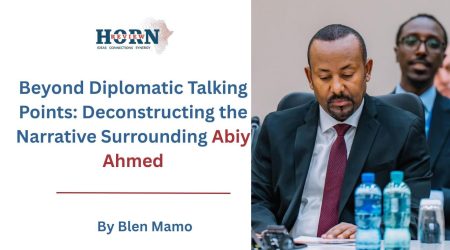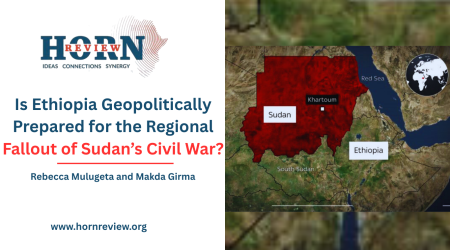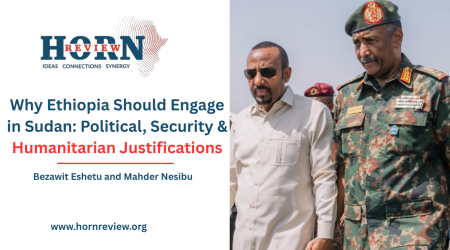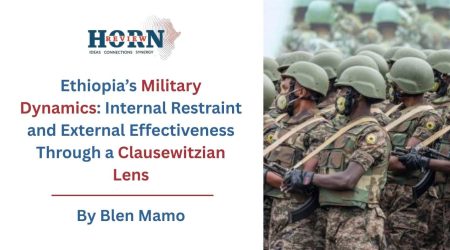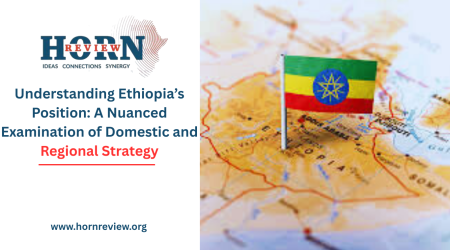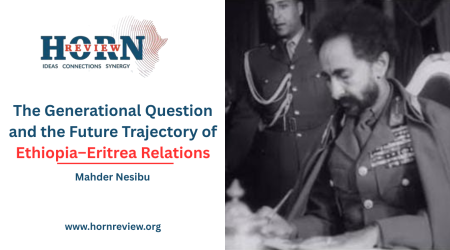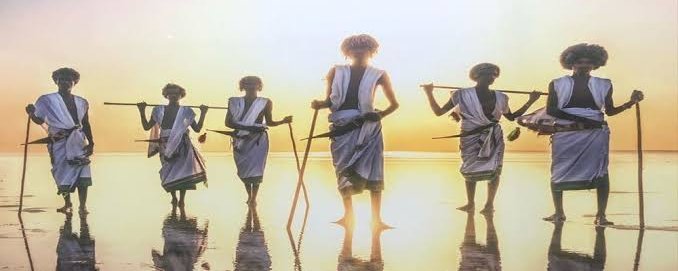
12
May
The Afar “Triangle”: A New Epicenter of Tension in the Horn
One of the most enduring and destabilizing legacies of colonial-era border-making in Africa lies in the arbitrary delineation of state frontiers that failed to reflect the cultural, ethnic, and political realities on the ground. The borders drawn by European powers ignored preexisting patterns of identity and governance, dividing cohesive communities across multiple sovereign jurisdictions and contributing to long-term fragmentation. The consequences of this artificial partitioning have been profound, manifesting in chronic instability, borderland disputes, secessionist movements, and irredentist sentiments across the continent.
Among the communities most adversely affected by this legacy are the Afar people, an indigenous ethno-linguistic group native to the Horn of Africa who inhabit a contiguous transboundary region encompassing northeastern Ethiopia, southern Eritrea, and western Djibouti. This area, commonly referred to as the Afar Triangle, was carved into three separate nation-states, effectively transforming the Afar homeland into a geopolitical buffer zone, vulnerable to the strategic interests and contestations of the surrounding states.
Historically, the Afar have maintained a rich and sophisticated political culture rooted in their nomadic and pastoralist lifestyle. Their governance systems, including clan-based councils and Islamic sultanates, have operated across borders, maintaining cohesion despite state divisions. These customary institutions were instrumental in adjudicating conflicts, managing shared grazing and water resources, and upholding social order. Notably, their transnational clans and shared lineage have long underpinned a strong sense of collective identity and cultural unity, transcending the imposed boundaries of Ethiopia, Eritrea, and Djibouti.
Yet despite this deep-rooted cultural coherence and political continuity, the Afar have remained structurally marginalized within the formal political systems of the states they inhabit. In both Djibouti and Eritrea, their political representation has been historically limited, and they continue to face systemic exclusion from decision-making processes that directly affect their territories and livelihoods.
In Djibouti, a multi-ethnic republic composed mainly of Somali Issa and Afar communities, political power has long been skewed toward the Issa. The country’s political institutions, power-sharing frameworks, and resource allocations reflect this asymmetry and have been a recurrent source of ethnic tension. This imbalance came to a head during the 1991, 1994 civil war, when the Front for the Restoration of Unity and Democracy (FRUD), an armed movement dominated by Afar actors, launched an insurgency against the Issa-led government of President Hassan Gouled Aptidon. FRUD accused the regime of systematic marginalization, particularly the exclusion of Afar citizens from high-ranking government positions, the armed forces, and civil service. Although the civil war formally ended with a peace agreement in 1994, the underlying issues were not fully addressed. Periodic unrest flared up again in the early 2000s and during the 2011 elections, with Afar communities continuing to express grievances about their political and economic exclusion.
In Eritrea, the Afar constitute a smaller demographic segment but have endured intense repression under the authoritarian regime of President Isaias Afwerki and the ruling People’s Front for Democracy and Justice (PFDJ). Since Eritrea’s independence in 1993, the Afar have faced multiple layers of marginalization, their traditional coastal lands have been expropriated by the state, their fishing zones militarized, and their cultural practices severely restricted. The government has further sought to dismantle their cross-border kinship ties, isolating Eritrean Afars from their communities in Djibouti and Ethiopia. These policies have had the effect of eroding cultural cohesion and weakening political agency. In response to these repressive measures, the Red Sea Afar Democratic Organization (RSADO) was established in exile. RSADO advocates for the liberation of Eritrean Afars, the preservation of their cultural heritage, and the right to self-determination.
By contrast, the situation of the Afar in Ethiopia is comparatively more stable and institutionally integrated. Under the federal system introduced in the 1995 Constitution, the Afar people were granted their own constitutionally recognized regional state, the Afar Regional State, providing them with a degree of territorial autonomy and political self-governance. Within this framework, they enjoy the right to administer their own affairs, exercise democratic voting rights, and protect their language and cultural identity. The political transition that began in 2018, following the decline of the Ethiopian People’s Revolutionary Democratic Front (EPRDF), further reconfigured the federal landscape. The new political configuration, centered around the principle of “unity in diversity”, created opportunities for greater regional agency and inclusive governance. As a result, the Afar region became less a satellite of a centralized ruling coalition and more an autonomous actor within a federated system.
Nevertheless, despite these institutional gains, the Afar region in Ethiopia remains fragile due to its strategic geography and porous borders. It frequently becomes a battleground for competing interests among Ethiopia, Eritrea, and Djibouti. Cross-border skirmishes, arms trafficking, and insurgent movements are not uncommon. In addition, the region struggles with pervasive underdevelopment, characterized by high maternal and child mortality rates, weak infrastructure, and limited access to health care, education, and clean water. These challenges have fueled local discontent and created fertile ground for political movements advocating for broader autonomy or cross-border Afar unification.
Thus, the Afar Triangle has emerged not just as a cultural homeland but as a geostrategic flashpoint. The intersection of ethno-national identity, state marginalization, and transboundary politics renders it a zone of persistent instability. As political conditions evolve across the Horn of Africa, two broad scenarios appear likely, each pointing to very different futures for the Afar people.
The first possibility follows a model of democratic pluralism and regional cooperation akin to certain arrangements in Europe, where ethnically dispersed communities maintain cultural integrity and political rights across national boundaries. In such a framework, the Afar could continue living in their respective states but enjoy cultural autonomy, equal citizenship, and transnational social ties safeguarded by cooperative state agreements. This model, seen in parts of post-war Europe, was instrumental in mitigating irredentism and preventing large-scale conflict by institutionalizing minority protections and regional development.
The second, more troubling trajectory, is one in which national borders continue to harden in response to resource competition, territorial disputes, and internal insecurity. If current trends of exclusion persist in Eritrea and Djibouti, the Afar population may find themselves further isolated and disenfranchised. In this context, Ethiopia, by virtue of its demographic weight, more inclusive federal architecture, and history of better (though still imperfect) treatment of Afar communities, could become the default center of Afar political life. This shift could manifest through increased migration into Ethiopia, greater alignment with Ethiopian political institutions, or even the de facto consolidation of Afar cultural and political life under the Ethiopian state.
In either case, the future of the Afar will be shaped by the broader trajectory of state behavior in the Horn of Africa, whether toward accommodation and integration or exclusion and confrontation. Their fate remains a litmus test for the region’s ability to reconcile sovereignty with pluralism, and statehood with the dignity of its indigenous peoples.
By Yabsira Yeshiwas,Researcher,Horn Review

